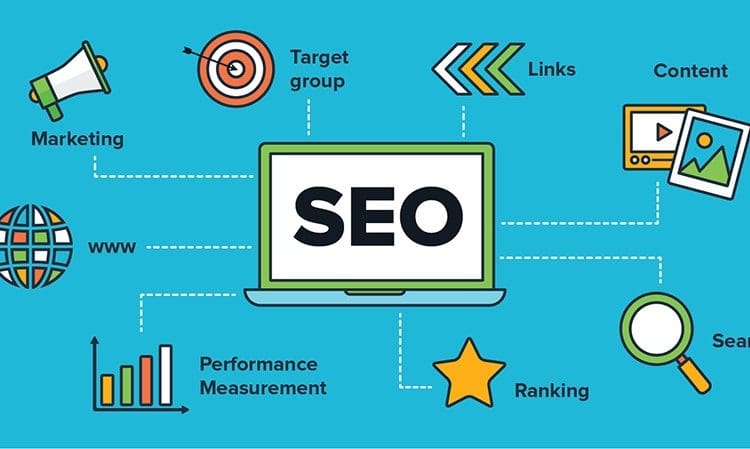Domain authority is crucial in reaching the highest ranks for website content in the Search Engine Results Page (SERP). The SERP is a set of outcomes once a user finds a topic on search engines. Since billions of websites try to grow an online presence, having a domain authority can help blogs succeed.
If you want to grow your blog, you can start writing for other websites. Although this technique may take a lot of work, making guest posts is a great way to connect with more visitors. Thus, there are tips for accepting guest posts to help you prevent low-quality content on your website.
This article includes tips in creating guest blog guidelines and how they can affect your domain authority.
Guest blogging is an excellent way to enhance your website traffic. However, if it’s improper, it can be harmful to your brand. To maintain high domain authority, you must create a guest post guideline before publishing an article on your website.
Here’s a sample guideline for accepting high-quality guest posts:
1. Create a List of Guest Blogging Websites
Guest blogging helps websites obtain a positive reputation, attract their target market, and earn new blog readers. However, finding the right guest blogging websites is challenging when many options are scattered online. And although you can find the most successful one, your niches and values may differ.
This process begins with tracking down a list of authority guest writers in your niche. You can add keywords relating to your product offering or brand value.
One method to do is by typing ‘Guest post by *insert name here*’. This strategy allows you to find what the guest blogger previously wrote about. Undoubtedly, you can decide if their blog matches your niche.
While you create a list of guest blogging websites and conduct thorough research, you must use the right search strings and connect with guest blogging companies. In addition, you should avoid contributor accounts to make your search flow smoothly. In addition, some guest posts pose high risks, such as using spammy and irrelevant link-building tactics and posting plagiarized and poorly constructed content.
Choosing the right guest blogging website is tricky, yet it’s viable. Instead, create a list of these guest bloggers and avoid contributor accounts. Looking out for contributor account risks will save you from possible embarrassment because of a strained website reputation.
2. Nicely Reject Poor Content
Accepting guest posts is a great digital strategy to boost your blog visibility without exerting too much effort. In addition, this tactic can improve your domain authority. Here are five types of content you should look out for before rejecting a guest post:
(a) Irrelevant Content
The latest algorithm updates suggest that Google only chooses quality over quantity; thus, having fewer but valuable content leads to more blog productivity than writing many low-quality posts. If the guest writer focuses on irrelevant topics, either correct them or nicely reject their output.
(b) Low-Quality Content
A low-quality content includes grammar errors and poor sentence structures. For bloggers, you have to remember the worth of your website and your brand. Don’t accept anything below your standards to ensure development in online presence and credibility.
Content is the most crucial factor in determining if a website can be trusted. Having low-quality guest posts results in fewer blog visitors and a lower market share. Therefore, you must avoid accepting low-quality guest posts early on.
(c) Plagiarized Content
If you’re a professional blogger, you already have an idea of how a plagiarism-free post will affect your web traffic. Creating 100% original content is necessary for building a reputable website. Here are four reasons why you must steer away from plagiarism:
- Avoiding possible infringement strikes.
- Preventing search engine damages.
- Protecting against SEO ranking degradation.
- Maintaining brand reputation
You can check if the guest draft article is 100% plagiarism-free with websites like Copyscape, Grammarly, and Scribbr.
(d) Underwhelming Content
Blogging is one of the most productive tools marketers use to reach an audience online. This platform’s versatility can provide complete blog transformation to adhere to user preferences. However, a boring blog couldn’t retain its readers and site visitors.
A safe way to prevent posting dull and unexciting blog posts is to reject their first draft. You can show your guest writers the following techniques to help them produce amazing content for your website:
- Create strong headlines
- Craft a persuasive and exciting introduction
- Write for a specific set of readers
(e) Stolen Images
Stolen images attached to your blog are as bad as content plagiarism. For example, a website that uses stolen images may face serious repercussions. Therefore, you must check if your guest blogger has a previous or underlying copyright infringement case.
You can prevent this situation if you obtain licensed images. You can choose from the seven top image websites below:
- Adobe Stock Images
- Stock Photo Secrets
- Unsplash
- Shutterstock
- Pexels
- Deposit Photos
- Pixabay
It’s highly beneficial to reject the wrong type of guest posts. A poorly written content produces lower ranking and decreases SERP ranking. Therefore, you must pick content quality over high income.
3. Be Picky With What You Promote
Creating a guest blogging plan is a challenging task to enhance your domain authority. One bold move can either increase your market share or destroy your brand reputation. Therefore, you must be picky in what you promote.
It would help if you asked questions when deciding on another website’s promotion to reach guest posting success. Consider the five questions listed below:
- Are you in a similar niche?
- Would you catch your viewers’ interest?
- Is the product attractive to you?
- Does the company share the same ethical values?
- Can they provide a sample product?
You expose your guests’ brands as they appear in your blog. This strategy can help you attract a larger audience. However, if your website doesn’t align with your guests’ values, you may lose your audience. Thus, you must pick the right brands to promote.
4. Choose The Article That Stands Out
You should find ways to stand out in a sea of websites. If your product competitors are already gaining thousands of page visitors, you should change your strategy. Articles that stand out include the following:
(a) Ultimate Guides
Creating ultimate guides about a product related to your niche is beneficial. The next generation may use these guides as future references. Therefore, you must start posting top guides on your website to make your brand relevant for a long time.
To attract more readers, you may choose to create an exciting ultimate guide about your product. Here’s a step-by-step process on writing ultimate guides to increase domain authority:
(b) Find The Purpose Of Your Ultimate Guide
It’s hard to achieve guest blogging success if you don’t know why you need to write about an ultimate guide. While it’s exciting to jump straight to searching the right keywords, you must first understand the ultimate goal of your strategy.
The first step to understanding the purpose of your ultimate guide is by choosing a topic. This method will help you explain the most important details of the top guide article. Therefore, you must consume an abundance of information by conducting research.
You must remember the importance of picking a trending topic in choosing one. When people are curious about a topic, they’re likely to gather much information about it. Therefore, you must keep an eye on the trends to achieve relevance and domain authority.
After doing thorough research, you must choose the right topic title. To produce high search traffic, you shouldn’t select the topic’s title because of its search volume. Instead, you must focus on finding related keywords.
If you have a clear objective in your mind, it’s easier to determine what you must provide to your audience.
(c) Pick the right keywords
Putting all the keywords isn’t productive for an ultimate guide. Therefore, you must only choose those that fit your mission and niche. Here are nine factors to consider in choosing the proper keywords for your blog content:
- Conduct keyword research
- Identify search intent
- Track visitors’ preferences history
- Analyze your competitors
- Assess the suitable keyword content format
- Fit each keyword into the content
- Answer the users’ questions in a short article
- Remove fluff
- Understand if there are already multiple “ultimate guides” about your chosen topic
- Tutorials
The primary intent of tutorials is the knowledge they provide for their viewers. For example, a study found that e-learning has increased up to 900% as of 2017, so writing a how-to page can help you attract a larger audience and interact with them.
To create your first practical tutorial on the website, you must consider these ten aspects:
- Identify the tutorial learning goals
- Have a list of guidelines before you begin
- Consider the mode of delivery
- Create a lesson plan
- Prepare your visual aids (if you plan on using them)
- Provide handouts
- Prepare questions in advance
- Ask for the viewers’ feedback
- Mirror professional gestures
- Maintain an open line of communication for their questions
5. Choose The Proper Content Tone
Writing can transform a web page with the proper content tone. With a powerful grasp of style, you can deliver a more explicit message to your audience. Thus, it’s crucial to correctly pick the right content tone to address the audience adequately.
Here are several types of content tones you must consider:
(a) Professional Tone Writing Style
Having the correct professional tone is important. However, it’s challenging to keep it business-like. Here are some common professional tone standards to look out for when accepting a guest post:
- Confidence
- Sincerity
- Positivity
- Respect
- Accessibility
- Persuasive
With thoughtful analysis, it’s possible to deliver a professional tone.
(b) Casual Tone Writing Style
Unlike the professional tone, the casual tone is expressive, cheerful, and conversational. This writing style is what you usually use when speaking to a friend. A calm tone is best for news articles and magazines.
(c) Neutral Tone Writing Style
A neutral tone in writing is unbiased and direct. This type of writing style is made for topics including sensitive content. However, the writer of this type of article doesn’t support a stance.
(d) Fun and Uplifting Tone Writing Style
This writing style is made for adventurous and parenting topics. This tone is for readers who are searching for a bubbly read.
(e) Academic Tone Writing Style
Academic writing conveys reports or empirical fieldwork for the sciences made for students and professors. This writing style includes warm, sarcastic, and formal tones. However, the author has to be extra careful in communicating it to his audience.
Advantages of Creating Guest Blog Guidelines
(a) Increases Website Audience
Building a website can help reach a larger page audience if you have your own business. As the viewer count increases, you can achieve your sales quota faster. Creating guest post guidelines will help you reach more website traffic. Therefore, you must only accept high-quality guest posts to increase the page visits.
(b) Boosts SERP Position
You must’ve invested thousands in attracting your target customers, but you still don’t get enough website traffic. Achieving domain authority includes creating high-quality content to increase the productivity of search engine optimization (SEO). Thus, a well-written and SEO-friendly guest post is a great way to improve your SERP position.
Here are nine guest posting benefits of your SERP position:
- Targeting fewer content niches
- Retaining audience interest through consistent posting
- Satisfying customer needs
- Providing market growth
- Connecting with other entrepreneurs with the same market demographics
- Creating the right content to maximize brand reputation
- Ensuring search engine recognition
- Providing promotional backlinks
- Improving blog user engagement by receiving insights from customers
(c) Avoids Low-Quality Guest Posts
Guest posting is a good way to attract your audience. However, this method can cause harm to your website if it’s not right. Here are eight reasons why you must add avoiding low-quality guest posts in your guest post guidelines:
- Attracting the right market.
- Sending targeted traffic.
- Avoiding a spammy reputation.
- Answering the blog audience’s queries.
- Providing interesting topics that add relevant information for older blog subjects.
- Offering valuable content and ensuring a productive link-building experience for the customer.
- Converting post readers into website visitors.
- Contributing to building positive relationships with partners.
It’s essential to achieve customer satisfaction to attract customers in any industry, even online. Therefore, it’s better to avoid a negative customer experience initially.
Key Takeaway
Creating a guest blog guideline can help you boost your domain authority. Therefore, you must consider the factors written above before you accept a guest post.





